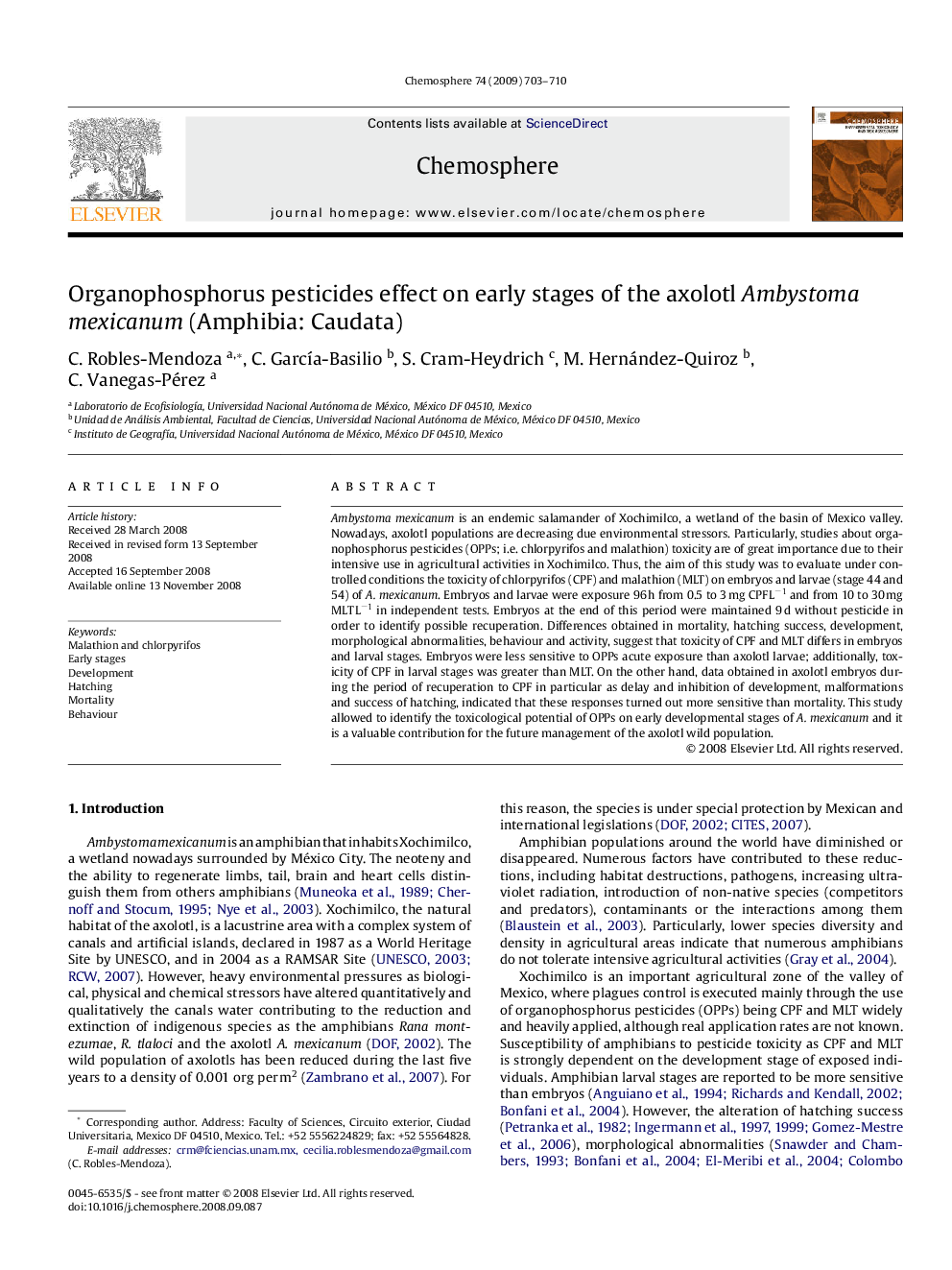| Article ID | Journal | Published Year | Pages | File Type |
|---|---|---|---|---|
| 4412532 | Chemosphere | 2009 | 8 Pages |
Ambystoma mexicanum is an endemic salamander of Xochimilco, a wetland of the basin of Mexico valley. Nowadays, axolotl populations are decreasing due environmental stressors. Particularly, studies about organophosphorus pesticides (OPPs; i.e. chlorpyrifos and malathion) toxicity are of great importance due to their intensive use in agricultural activities in Xochimilco. Thus, the aim of this study was to evaluate under controlled conditions the toxicity of chlorpyrifos (CPF) and malathion (MLT) on embryos and larvae (stage 44 and 54) of A. mexicanum. Embryos and larvae were exposure 96 h from 0.5 to 3 mg CPF L−1 and from 10 to 30 mg MLT L−1 in independent tests. Embryos at the end of this period were maintained 9 d without pesticide in order to identify possible recuperation. Differences obtained in mortality, hatching success, development, morphological abnormalities, behaviour and activity, suggest that toxicity of CPF and MLT differs in embryos and larval stages. Embryos were less sensitive to OPPs acute exposure than axolotl larvae; additionally, toxicity of CPF in larval stages was greater than MLT. On the other hand, data obtained in axolotl embryos during the period of recuperation to CPF in particular as delay and inhibition of development, malformations and success of hatching, indicated that these responses turned out more sensitive than mortality. This study allowed to identify the toxicological potential of OPPs on early developmental stages of A. mexicanum and it is a valuable contribution for the future management of the axolotl wild population.
